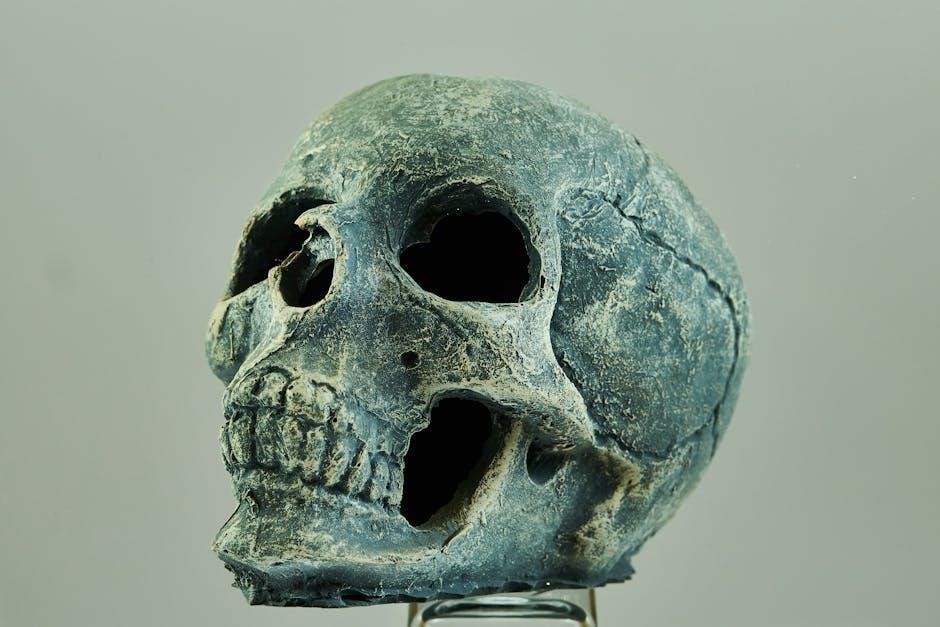Guided Tissue Regeneration (GTR) and bone grafting are advanced surgical techniques used in periodontal and implant surgery to restore lost tissue and bone. Both methods aim to promote healing and regeneration, addressing bone loss and tissue damage. While GTR uses barrier membranes to direct tissue growth, bone grafting involves adding bone material to deficient areas. These procedures often complement each other, ensuring optimal outcomes in modern dentistry.
Definition and Purpose of Guided Tissue Regeneration (GTR)
Guided Tissue Regeneration (GTR) is a surgical procedure that uses barrier membranes to direct the growth of new periodontal tissues, such as bone, ligaments, and cementum, in areas damaged by periodontal disease. Introduced by Melcher in 1976, GTR aims to regenerate lost tissues rather than merely repairing them, promoting natural healing and creating a stable environment for dental implants.
Definition and Purpose of Bone Grafting
Bone grafting is a surgical procedure that repairs bone defects by adding bone tissue, either from the patient or synthetic sources, to promote new bone formation. Commonly used in dental surgery, it addresses bone loss caused by periodontal disease or trauma. The graft stabilizes dental implants, restores jawbone density, and prevents further bone degradation, ensuring long-term oral health and functional support for prosthetics and implants.

Key Differences Between GTR and Bone Grafting
GTR focuses on guiding tissue growth using barrier membranes, primarily targeting periodontal tissue regeneration. Bone grafting involves adding bone material to repair defects, aiming to restore structural bone support for implants and overall jaw stability.
Procedures and Mechanisms
GTR involves placing a barrier membrane over periodontal defects to guide tissue growth, preventing gingival epithelium invasion. Bone grafting uses graft materials to fill bone defects, promoting new bone formation. GTR mechanisms focus on regeneration, while bone grafting relies on osteoconduction and osteogenesis, enhancing structural repair.
Indications and Applications
Guided Tissue Regeneration (GTR) is typically used for periodontal defects, such as deep pockets and furcation defects, to regenerate lost bone and gum tissue. Bone grafting is commonly indicated for repairing larger bone defects, ensuring adequate support for dental implants. Both procedures are essential in restoring oral health, with GTR focusing on tissue regeneration and bone grafting on structural repair.

Advantages of Guided Tissue Regeneration
Guided Tissue Regeneration promotes natural growth of bone and gum tissue, offering a minimally invasive approach that reduces trauma and supports faster healing and recovery.
Promotion of Natural Tissue Growth
Guided Tissue Regeneration (GTR) harnesses the body’s natural healing potential by using barrier membranes to direct the growth of bone and gum tissue. This approach prevents soft tissue from invading defect sites, allowing bone and periodontal ligaments to regenerate naturally. The result is a functional and aesthetically pleasing outcome, restoring lost tissue and supporting long-term oral health effectively.
Minimally Invasive Approach
Guided Tissue Regeneration (GTR) is a minimally invasive procedure that utilizes barrier membranes to guide tissue growth without extensive surgical intervention. This approach reduces tissue trauma and promotes faster recovery. By limiting disruption to surrounding areas, GTR minimizes pain and swelling, offering a more comfortable experience for patients compared to traditional surgical methods.

Advantages of Bone Grafting
Bone grafting adds density and volume to the jawbone, enhancing support for dental implants. It prevents further bone loss and provides long-term stability for implants, bridges, and dentures, ensuring durable oral health outcomes.
Stability and Support for Dental Implants
Bone grafting enhances the stability and support for dental implants by adding density and volume to the jawbone. This procedure ensures a secure foundation for implants, preventing shifting or loosening over time. It also addresses bone loss, providing long-term structural integrity and improving the overall success rate of implant placement. This makes bone grafting a critical step for patients with insufficient bone structure.
Long-Term Bone Health
Bone grafting contributes to long-term bone health by restoring jawbone density and preventing further bone loss. This procedure supports the structural integrity of the jaw, ensuring durability and stability for dental implants and natural teeth. By promoting a healthy bone foundation, bone grafting helps maintain oral function and aesthetics over time, addressing both immediate and long-term needs effectively.

Recovery and Healing Times
Guided Tissue Regeneration (GTR) and bone grafting require distinct recovery periods. GTR’s initial healing phase is crucial, while bone grafting needs 3-6 months for integration before further procedures.
Post-Surgery Care for GTR
Proper post-surgery care is essential for GTR success. Patients should avoid chewing on the treated area, use soft-bristle toothbrushes, and rinse with antimicrobial mouthwash. A soft diet is recommended initially, and regular follow-ups are crucial. Pain management and swelling reduction are addressed with prescribed medications. The healing process typically requires several months to ensure tissue regeneration and membrane integration.
Post-Surgery Care for Bone Grafting
After bone grafting, patients may experience swelling, bruising, and pain, managed with prescribed medications. A soft diet is recommended for several weeks. Avoid disturbing the graft site, and maintain good oral hygiene with gentle brushing. Follow-up appointments are crucial to monitor healing. The bone graft typically requires 3-6 months to integrate before further procedures, ensuring stability for dental implants or other restorative work.

Clinical Efficacy and Success Rates
Both GTR and bone grafting demonstrate high clinical success rates, with studies showing predictable outcomes in tissue and bone regeneration. Bone grafting achieves over 90% success in implant stability, while GTR effectively regenerates periodontal tissues in targeted areas.
Comparative Studies on GTR and Bone Grafting
Comparative studies have evaluated the efficacy of GTR and bone grafting, revealing distinct outcomes. GTR shows high success in periodontal tissue regeneration, while bone grafting excels in structural support. A 2022 study highlighted GTR’s predictable bone regeneration, while a 2023 analysis emphasized bone grafting’s role in implant stability. Combined approaches often yield enhanced results, as noted in a 2024 comparative trial.
Predictable Outcomes in Dental Surgery
Both GTR and bone grafting offer predictable outcomes in dental surgery, with GTR excelling in periodontal tissue regeneration and bone grafting providing structural support. Combined, they enhance surgical reliability, ensuring improved tissue and bone healing. Their complementary nature addresses diverse clinical needs, offering tailored solutions for patients with varying degrees of bone and tissue loss, as supported by clinical evidence and case studies.

When to Choose GTR vs. Bone Grafting
GTR is ideal for periodontal tissue regeneration, especially when the bone structure is adequate but tissue is damaged. Bone grafting is preferred for structural support in cases of significant bone loss, often preceding dental implants. The choice depends on the extent of defects and treatment goals, with both sometimes combined for optimal results.
Specific Clinical Scenarios
Guided Tissue Regeneration (GTR) is typically used for treating periodontal defects, such as deep pockets or furcation defects, where tissue regeneration around teeth is the priority. Bone grafting is preferred in cases of significant bone loss, particularly for dental implant placement, ensuring adequate jawbone density. Both procedures are selected based on the defect type, severity, and desired treatment outcomes, often complementing each other for comprehensive care.
Factors Influencing the Decision
The choice between GTR and bone grafting depends on the extent of bone loss, the need for dental implants, and the patient’s overall health. GTR is preferred for periodontal defects and natural tooth preservation, while bone grafting is ideal for severe bone deficiency and implant stability. Patient compliance, healing capacity, and defect morphology also guide the decision, ensuring tailored treatment plans for optimal outcomes.

Case Studies and Real-World Applications
GTR and bone grafting have proven effective in clinical scenarios, restoring periodontal health and enabling successful dental implants. Real-world applications highlight their versatility in addressing diverse tissue and bone defects, ensuring functional and aesthetic outcomes for patients with advanced periodontal disease or insufficient bone structure.
Successful Outcomes with GTR
GTR has demonstrated remarkable success in regenerating periodontal tissues, particularly in cases of advanced gum disease. By using barrier membranes, GTR effectively guides the growth of new bone and gingival tissue, restoring the supportive structures around teeth. Clinical studies highlight its effectiveness in addressing defects caused by periodontitis, leading to improved dental stability and enhanced oral health outcomes for patients with significant bone loss.
Successful Outcomes with Bone Grafting
Bone grafting has proven highly effective in restoring jawbone density and providing stable support for dental implants. It successfully addresses bone loss from periodontal disease or trauma, enabling implant placement in deficient areas. Clinical studies show significant bone regeneration, with improved long-term stability and aesthetics. Patients often experience enhanced oral function and confidence, making bone grafting a reliable solution for complex dental reconstruction needs.

Challenges and Limitations
Both GTR and bone grafting present challenges, including swelling, pain, and prolonged healing times. Success often depends on skilled specialists and patient compliance, with limitations like graft material availability affecting outcomes.
Common Complications and Risks
Common complications include infection, membrane exposure, and graft failure. GTR risks involve swelling and pain, while bone grafting may lead to bruising and prolonged healing; Proper care and compliance are essential to minimize these risks and ensure successful outcomes for both procedures.
Technique Sensitivity and Patient Compliance
Both GTR and bone grafting require skilled execution and patient cooperation. Technique sensitivity is higher in GTR due to membrane placement and stability. Patient compliance with post-surgery instructions is crucial to avoid complications like membrane exposure or graft failure. Proper wound care and avoiding stress on the surgical site are essential for optimal healing outcomes in both procedures.
Guided tissue regeneration and bone grafting offer promising solutions for tissue and bone restoration. Advances in materials and techniques are expected to enhance their efficacy and accessibility in modern dentistry.
Evolution of Regenerative Techniques
The evolution of regenerative techniques in dentistry has transformed tissue and bone reconstruction. Guided tissue regeneration, introduced by Melcher in 1976, uses barrier membranes to direct growth. Advances in biocompatible materials and growth factors have enhanced predictability. Bone grafting has evolved with synthetic and allograft options, improving outcomes. These innovations continue to refine regenerative approaches, offering minimally invasive solutions for modern dental challenges.
Patient-Centered Approaches in Modern Dentistry
Modern dentistry emphasizes patient-centered care, tailoring treatments to individual needs. Guided tissue regeneration and bone grafting are adapted to ensure comfort and effectiveness. Personalized treatment plans, minimally invasive techniques, and the use of biocompatible materials enhance patient outcomes. These approaches prioritize patient comfort, aesthetics, and long-term oral health, making regenerative procedures more accessible and aligned with patient expectations and goals.



